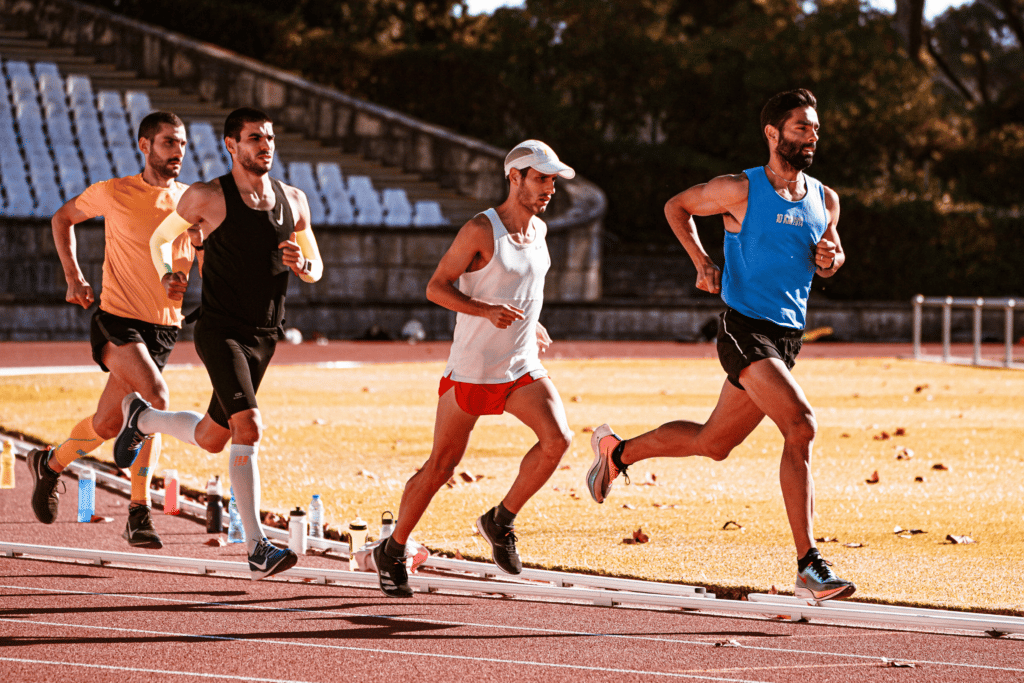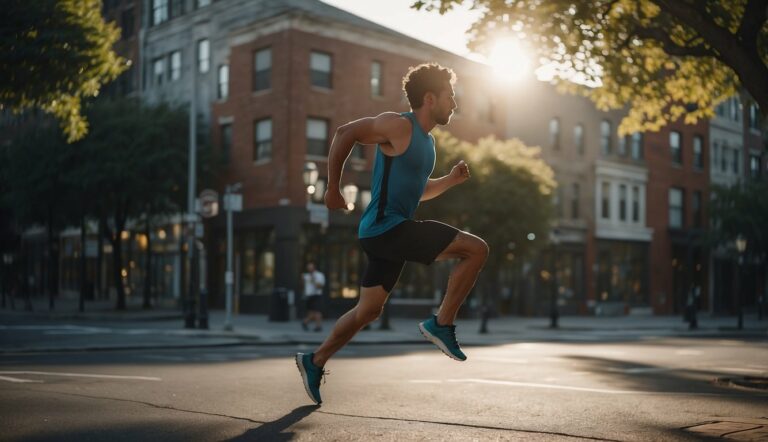Are Runners Allowed To Run on the Road? (Typical Rules & Regulations)
Although there’s a large amount of debate about whether or not runners are allowed to run on the road or the sidewalk, what is the legal answer to this question?
Runners typically aren’t allowed to run on the road because they are required to use the sidewalk unless there is no other option. Interstates and highways do not permit pedestrian traffic. On other roads, runners should stay on the sidewalk if possible; otherwise, runners should face oncoming traffic and run along the shoulder of the road.
Keep reading for additional details regarding specific types of roadways and a few tips for runners and pedestrians who choose to travel on or near the road.
Is it legal for runners to run on the road?
You’ve certainly seen people running down the side of the road – you may even have been one of those people. While asphalt is more forgiving and comfortable to run on, is it legal?
Runners can run on most roads as long as no sidewalk is available. When running in the street, runners must face oncoming traffic and run as far away from traffic as they can while safely staying on the shoulder. It is not legal for runners to run on roads where pedestrians and foot traffic are not allowed, specifically interstates and most state highways.
But, do runners have the right of way on the road? Is running on the road good or bad?
Let’s take a look at the major types of roads and find out whether or not runners can run on them.

Interstates
Most American interstates are considered access only, which means only motorized vehicles that can reach a minimum speed of 40 mph are allowed on them.
Runners cannot run on interstates in the United States. This is for the safety of both the runner and the traffic.
Pedestrians are not allowed on the interstate; the only exception to this law is in case of emergency.
Highways
Much like interstates, most U.S. and state highway codes stipulate that they are access only. This means pedestrians traveling using a bike, walking, or running are not allowed to use the highway for transportation – you have to use a car.
Runners may not run on highways. Bikers, walkers, and runners would significantly slow down traffic and create unsafe situations, which is why these pedestrian ways of travel are prohibited on highways and interstates.
These restrictions also have to do with the fact that a minimum speed of 40 MPH governs most interstates and highways.

City roads
The specifics of pedestrian permissions on city roads go back to the simple guidelines discussed earlier. Most city roads will have a sidewalk nearby since cities are busy areas for cars and pedestrians.
Runners should utilize the sidewalk rather than running on the road in this situation. If there isn’t a sidewalk available, runners should run as far away from the road as possible and run toward oncoming traffic to stay aware.
Running on the road advantages
Personally, I love running on the road because I don’t have to think too much about where I’m going – I just follow the path!
Road have even ground, they are smooth, and generally well-kept, especially in subdivisions.
Disadvantages to running on the road
Of course, you have to avoid getting hit by a car on the road. You’ll also deal with harder ground than running on a track, field, or trail.
County roads
County roads are typically two-lane and void of sidewalks, making them a less-than-ideal candidate for runners to use for their exercises.
Runners can technically run on the shoulder of these roads as long as there isn’t a sidewalk available and they’re facing oncoming traffic.
County roads are not necessarily safe places for runners as drivers tend not to be expecting pedestrians in these areas.
Running on the sidewalk of neighborhoods or suburbs
Neighborhood roads are generally lined with sidewalks so that people living in the neighborhood can quickly go for a walk or run and safely travel on the sidewalk.
If this isn’t the case, runners can still legally run on the shoulder of the road and face oncoming cars in their neighborhood or suburban areas.
Neighborhood roads, particularly those in isolated subdivisions, tend to be among the safest places to run on the street as traffic is limited to those who live nearby, and there are frequent stop signs.

Where should runners run if there are no sidewalks?
We’ve established that runners are legally required to stay on the sidewalk if the option exists, but what if the road doesn’t have sidewalks?
In the absence of a sidewalk, runners are required to run on the shoulder, as far away from the oncoming traffic as they can. Runners should position themselves where they’re facing the direction of oncoming traffic.
Most states have a specific law regarding where runners need to run if there aren’t sidewalks. For example, Florida’s law states that runners should run on sidewalks when available and should run on the shoulder, facing oncoming traffic if not.

Safety tips when running on roadways
Specific laws are set to keep runners and pedestrians safe from the stressful environment of running on or near the street. Runners and pedestrians should consider these laws and implement their own safety measures when running on the street or in the street
Below are a few simple tips that runners and pedestrians can use to minimize the risk of running on or near the street.
- Run against moving traffic
- Wear high-visibility clothes
- Have a mentality of staying aware
Let’s look at how following these tips can help keep you safe when running.
Run against moving traffic
Many people might not have thought about it, but are you supposed to run with or against traffic?
As a law in most states, running against traffic is easy for runners and pedestrians to stay aware when traveling on the street. This allows them to look at oncoming traffic and determine if they’ll need to dodge a car drifting onto the shoulder.
Traveling with the flow of cars makes it possible that a runner or pedestrian may be unaware of what’s happening behind them, making them more prone to involvement in an accident.
Wear high-visibility clothes
Wearing easily visible clothes is a simple way to make drivers more aware that you’re traveling on the shoulder of the road.
If you know beforehand that you’ll be running on the shoulder of the road as opposed to the sidewalk, try to dress in clothes that will be easily visible based on the time of day and the colors of your surrounding environment.
Have a mentality of staying aware
Going into your travels with the mindset of staying aware and paying careful attention to your surroundings is an excellent way to keep your mind sharp going into a street-side run.
Eliminating the use of earphones during such runs to stay in tune with the surrounding environment and listening carefully to the cars around you can help you to remain aware, thus helping you to do your part in eliminating a potential accident.






